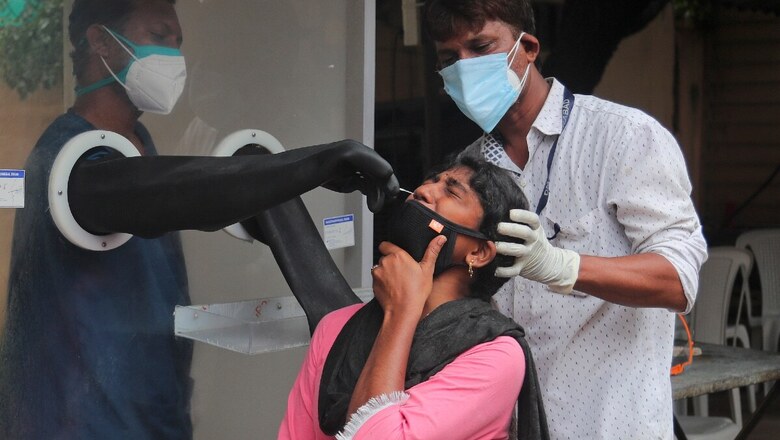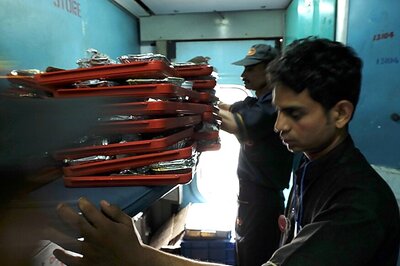Over 90k Covid-19 Recoveries in a Day and Recovery Rate Crosses 80%, But Experts Say It Means Little

views
“India reports more than 90,000 recoveries for the 3rd successive day. Total recovered cases close to 43 kakh- the highest in the world. India’s Recovery Rate crosses the landmark of 80%,” read a statement from the Ministry of Health and Family Welfare on Monday afternoon.
India, for a while now, has seen a consistent increase in recovery rate of Covid-19 cases. But is increase in recoveries an indicator of the situation in the country improving vis a vis the pandemic or is this ostensible ‘silver lining’ really a misnomer?
“The recovery percentage is of very little significance from an epidemiological perspective. It tells us nothing about the current state of the pandemic since it is a cumulative measure,” says Professor Gautam Menon, professor of physics and biology at Ashoka University .
Professor Menon says that for Covid-19, with an infection fatality rate of about 0.1% -0.5%, more than 99% of those infected with it will finally recover. So reporting an ongoing recovery rate that is increasing contains little information since that is exactly what should be happening.
A senior member of the National Task Force on Covid-19, while speaking on the condition of anonymity, said, “Our base is large. If we are adding 90,000 plus cases a day and a thousand people are dying, the recovery rate will be pushed up. It means nothing. It will cross even 90-95%.”
Test positivity rates and how they trend would be the most significant indicator of the current progress of the pandemic, say experts. “The growth/changes in the numbers of those critically ill is also significant, since availability of medical care and infrastructure such as oxygen cylinders and ICUs will determine whether they will survive or not. Mortality and its trends, certainly, are a measure of the ultimate impact of the pandemic on our society,” says Professor Menon.
India’s positivity rate has been well above the 5% mark. The World Health Organization says that countries must aim at keeping the positivity rate to below 5%. With just about 7 lakh tests on Monday, India’s positivity rate, the number of positive samples to the ones tested, shot up to 11.88%.
Experts say that India must now focus on the extent of morbidities in otherwise initially healthy people who contracted Covid. This is important, since we are increasingly seeing that recovery doesn’t mean the disease might not have long-lasting consequences for a person’s health afterwards.
Health economist Rijo M John also says that of the parameters to gauge India’s situation, recovery percentage is of little significance. “First of all, what we call recoveries are mostly discharges from Covid-care facilities and there have been reported incidents of people falling sick again and some even dying after being discharged. As per the discharge policy, patients who are mild/pre-symptomatic are discharged after 10 days of the onset of symptoms and not reporting fever for 3 days. They are discharged with an advice to self-isolate for 7 days more. This practice need not be foolproof,” says John.
He also says that there is little uniformity in how states overall are performing in terms of ensuring recovery of patients. “It varies significantly between states/UTs ranging from 54% in Meghalaya to 95% in Andaman and Nicobar Islands. A much higher prevalence of mild to moderate Covid-19 infections among the relatively younger people in India must be the main reason behind high recoveries,” he says.
John also says that recovery rates is a wrong metric to be focusing on and it essentially shifts the attention away from the 1 million plus active cases which are still growing, albeit at a lower rate. “This recovery rate will eventually hit at least 98%, if not more, even without any specific intervention, given the very low mortality rates. In fact, I believe, it is the economic recovery rate that the government must be now focusing on instead of Covid-19 recovery rate,” he says.
The focus must remain on reducing the spread of infection and ensuring that the testing continues to be high so that eventually the positivity rate is pushed down. The 7-day average daily test positive rate has been going up steadily over the past week and is now at 9.2%. This is because the number of tests India did during the past 7-day period has been about 7% lower than what it did during the previous 7-day period and, despite it, India reported almost the same number of cases (around 6.4 lakhs) on each of these 7-day periods.
So should India derive some satisfaction from the fact that weekly cases have started to fall? “It is too early to say if we have really reduced the number of new infections. Because, the number of new cases on average remained the same this week compared to last week, despite a lower number of tests. So, it appears that had the tests been higher, we may have found a higher number of cases too,” says John.




















Comments
0 comment